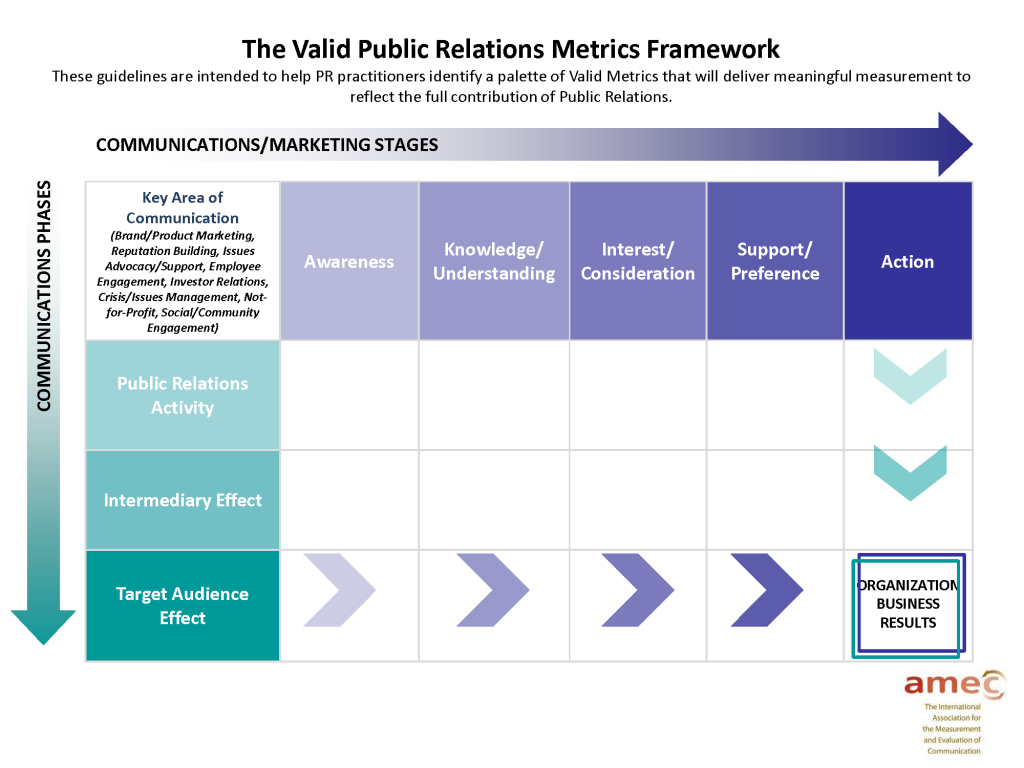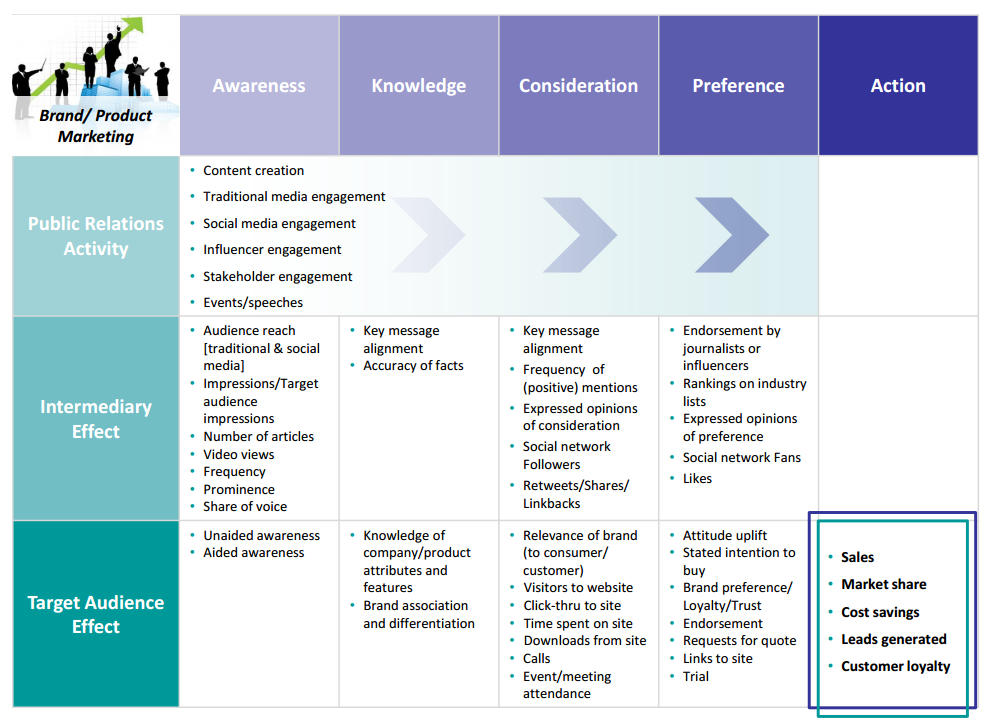As the content promotion industry evolves, marketers must deliver results and demonstrate return on investment to executives, management, and sometimes even shareholders.
In order to accurately evaluate the business impact of content promotion, marketers will need to move beyond merely measuring output—like the quantity of media coverage or potential impressions—and work to meaningfully tie together outputs to larger business outcomes like conversions, and leads, or sales.
Accurate measurement also requires strategic audience segmentation, targeted key messaging, and SMART objectives that are specific, measurable, achievable, relevant, and timely.
Successful marketers can build on their objectives by deepening their understanding of inputs, outputs, and outcomes and then utilizing a framework to measure content promotion success.
Understanding marketing inputs, outputs, and outcomes
Inputs are the background information and promotion activity needed to increase your chances of achieving your desired outputs and outcomes. Inputs during content promotion often include:
Outputs are the actual products of your content promotion strategy. They are quantified measures that can analyze the degree of audience exposure or reach, but they can’t explain to what extent you’ve influenced people’s opinions or behavior. They are a means to an end. Outputs may include:
Outcomes are one of the most important elements of any content promotion, and they are the toughest to evaluate. Measuring outcomes is about understanding the degree to which your content promotion has impacted people’s awareness, opinions, and behavior. Commonly measured outcomes include:
Outcomes are one of the strongest ways to calculate and communicate the ROI of your content promotion strategy. They are also a valuable piece of the puzzle that should impact the planning of future content development, promotion, and measurement.
In 2010, leading public relations organizations including AMEC, PRSA, and the Institute for Public Relations established the Barcelona Principles to emphasize the importance of setting measurable goals that link outputs to outcomes.
Following the launch of the Barcelona Principles, a PR industry task force developed the AMEC Valid Metrics Guidelines to serve as a framework to guide the development of a holistic, meaningful measurement process. To truly demonstrate the value of promotion, metrics need to be linked to the business objective of the campaign.
To simplify the process, first, understand promotion in three basic phases:
Then, the three phases are described in measurement terms:
These three phases comprise the vertical axis of the master framework. On the horizontal axis, you’ll see the five stages of the marketing funnel. This framework helps marketers view measurement on a multi-dimensional continuum that aligns with the marketing funnel and ties content promotion to overarching business goals.

In addition to the content promotion measurement framework template shown above, the AMEC task force also created eight different framework examples with metrics for different types of campaigns like brand marketing, reputation building, employee engagement, and more.
For example, take a look below at some of the suggested metrics for more traditional brand marketing:

Marketers and public relations professionals must continue to lead the way in demonstrating the business impact of content promotion. Tracking the clear and accurate connection between outputs and outcomes will a crucial step in legitimizing your content promotion programs. Building on SMART objectives with a clear expectation of inputs, outputs and outcomes will lead to accurate measurement of content promotion success.
For advice on tactics to boost your content promotion strategy, review The Content Promotion & Distribution Cheat Sheet.
Image credits: International Association for the Measurement and Evaluation of Communication